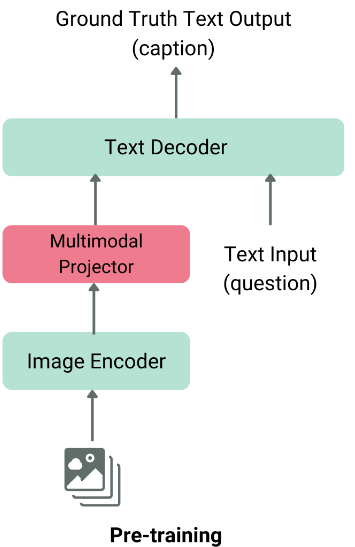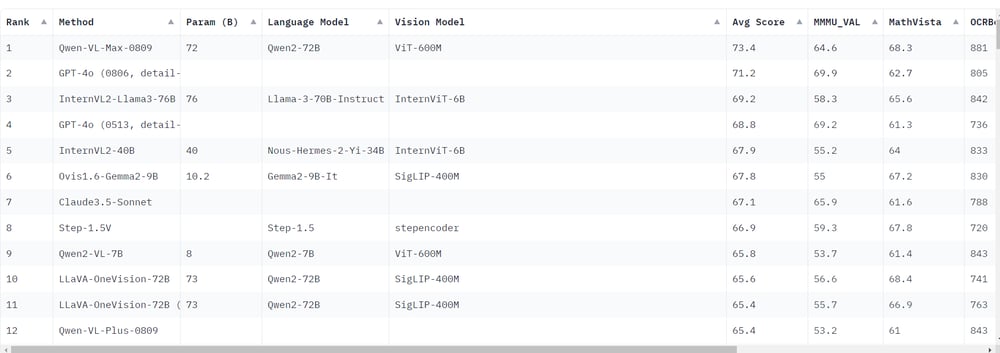%20for%20Image%20Classification_%20Performance%20Benchmarks.png?width=1000&height=556&name=Best%20Vision%20Language%20Models%20(VLMs)%20for%20Image%20Classification_%20Performance%20Benchmarks.png)
In the rapidly evolving field of artificial intelligence, the ability to accurately interpret and analyze visual data is becoming increasingly crucial. From autonomous vehicles to medical imaging, the applications of image classification are vast and impactful. However, as the complexity of tasks grows, so does the need for models that can seamlessly integrate multiple modalities, such as vision and language, to achieve more robust and nuanced understanding.
This is where Vision Language Models (VLMs) come into play, offering a powerful approach to multimodal learning by combining image and text inputs to generate meaningful outputs. But with so many models available, how do we determine which one performs best for a given task? This is the problem we aim to address in this blog.
The primary goal of this blog is to benchmark Top Vision Language Models on an image classification task using a basic dataset and compare its performance to our general-image-recognition model. Additionally, we will demonstrate how to use the model-benchmark tool to evaluate these models, providing insights into their strengths and weaknesses. By doing so, we hope to shed light on the current state of VLMs and guide practitioners in selecting the most suitable model for their specific needs.
A Vision Language Model (VLM) is a type of multimodal generative model that can process both image and text inputs to generate text outputs. These models are highly versatile and can be applied to a variety of tasks, including but not limited to:
The architecture of a typical VLM consists of two main components:
These two components are fused together using a modality fusion layer before being fed into the language decoder, which produces the final text output.

General architecture of vlm, image taken from hf blog.
There are many Vision Language Models available on the Clarifai Platform, including GPT-4o, Claude 3.5 Sonnet, Florence-2, Gemini, Qwen2-VL-7B, LLaVA, and MiniCPM-V. Try them out here!
Recent rankings indicate that Qwen-VL-Max-0809 has outperformed GPT-4o in terms of average benchmark scores. This is significant because GPT-4o was previously considered the top multimodal model. The rise of large open-source models like Qwen2-VL-7B suggests that open-source models are beginning to surpass their closed-source counterparts, including GPT-4o. Notably, Qwen2-VL-7B, despite its smaller size, achieves results that are close to those of commercial models.

The experiments were conducted on Lambda Labs hardware with the following specifications:
|
CPU |
RAM (GB) |
GPU |
VRAM (GB) |
|---|---|---|---|
|
AMD EPYC 7J13 64-Core Processor |
216 |
A100 |
40 |
We focused on smaller models (less than 20B parameters) and included GPT-4o as a reference. The models evaluated include:
|
model |
MMMU |
|---|---|
|
Qwen/Qwen2-VL-7B-Instruct |
54.1 |
|
openbmb/MiniCPM-V-2_6 |
49.8 |
|
meta-llama/Llama-3.2-11B-Vision-Instruct |
50.7 (CoT) |
|
llava-hf/llava-v1.6-mistral-7b-hf |
33.4 |
|
microsoft/Phi-3-vision-128k-instruct |
40.4 |
|
llava-hf/llama3-llava-next-8b-hf |
41.7 |
|
OpenGVLab/InternVL2-2B |
36.3 |
|
GPT4o |
69.9 |
We employed two main inference strategies:
|
"Question: Answer this question in one word: What type of object is in this photo? Choose one from {class1, class_n}. Answer: <model answer>" |
|
"Answer the question in one word: yes or no. Is the {class} in this photo?" |
The Caltech256 dataset consists of 30,607 images across 256 classes, plus one background clutter class. Each class contains between 80 and 827 images, with image sizes ranging from 80 to 800 pixels. A subset of 21 classes (including background) was randomly selected for evaluation.
|
model |
macro avg |
weighted avg |
accuracy |
GPU (GB) (batch infer) |
Speed (it/s) |
|---|---|---|---|---|---|
|
gpt4 |
0.93 |
0.93 |
0.94 |
N/A |
2 |
|
Qwen/Qwen2-VL-7B-Instruct |
0.92 |
0.92 |
0.93 |
29 |
3.5 |
|
openbmb/MiniCPM-V-2_6 |
0.90 |
0.89 |
0.91 |
29 |
2.9 |
|
llava-hf/llava-v1.6-mistral-7b-hf |
0.90 |
0.89 |
0.90 |
|
|
|
llava-hf/llama3-llava-next-8b-hf |
0.89 |
0.88 |
0.90 |
|
|
|
meta-llama/Llama3.2-11B-vision-instruct |
0.84 |
0.80 |
0.83 |
33 |
1.2 |
|
OpenGVLab/InternVL2-2B |
0.81 |
0.78 |
0.80 |
27 |
1.47 |
|
openbmb/MiniCPM-V-2_6_bin |
0.75 |
0.77 |
0.78 |
|
|
|
microsoft/Phi-3-vision-128k-instruct |
0.81 |
0.75 |
0.76 |
29 |
1 |
|
Qwen/Qwen2-VL-7B-Instruct_bin |
0.73 |
0.74 |
0.75 |
|
|
|
llava-hf/llava-v1.6-mistral-7b-hf_bin |
0.67 |
0.71 |
0.72 |
|
|
|
meta-llama/Llama3.2-11B-vision-instruct_bin |
0.72 |
0.70 |
0.71 |
|
|
|
general-image-recognition |
0.73 |
0.70 |
0.70 |
N/A |
57.47 |
|
OpenGVLab/InternVL2-2B_bin |
0.70 |
0.63 |
0.65 |
|
|
|
llava-f/llama3-llava-next-8b-hf_bin |
0.58 |
0.62 |
0.63 |
|
|
|
microsoft/Phi-3-vision-128k-instruct_bin |
0.27 |
0.22 |
0.21 |
|
|
Our general-image-recognition model is extremely fast (~50x faster than others) but falls short in performance compared to newer models like Qwen or LLaMA.
We also investigated how the number of classes affects the performance of the closed-set strategy. The results are as follows:
|
model | Number of classes |
10 |
25 |
50 |
75 |
100 |
150 |
200 |
|---|---|---|---|---|---|---|---|
|
Qwen/Qwen2-VL-7B-Instruct |
0.874 |
0.921 |
0.918 |
0.936 |
0.928 |
0.931 |
0.917 |
|
meta-llama/Llama-3.2-11B-Vision-Instruct |
0.713 |
0.875 |
0.917 |
0.924 |
0.912 |
0.737 |
0.222 |
GPT-4o remains a strong contender in the realm of vision-language models, but open-source models like Qwen2-VL-7B are closing the gap. Our general-image-recognition model, while fast, lags behind in performance, highlighting the need for further optimization or adoption of newer architectures. The impact of the number of classes on model performance also underscores the importance of carefully selecting the right model for tasks involving large class sets.
© 2023 Clarifai, Inc. Terms of Service Content TakedownPrivacy Policy






© 2023 Clarifai, Inc. Terms of Service Content TakedownPrivacy Policy